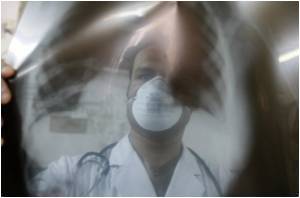A new laser machine with the power of 70 ovens to vaporize lung tumours is being used for the first time in the UK.

The 'lung laser' was unveiled earlier this year at the Royal Brompton Hospital in Chelsea, Central London.
George Ladas, who prepared the device, said the old operating method was like a marathon.
Although the laser can be used on selected primary tumours, it is more commonly used on secondaries as surgery on primary lung tumours often requires removing a larger part of the lung.
"The laser was of major interest to me in removing multiple tumours within the lung which had started in another part of the body," the Daily Mail quoted Ladas as saying.
"When you deal with secondary tumours it is usual for a patient to have ten or more in each lung.
Advertisement
For the surgery, laser light beam is transmitted down a flexible glass cylinder covered in a plastic sheath.
Advertisement
Once in position it delivers a staggering 70,000 watts of energy per sq cm, which generates heat of 700C at the wave of his wand. Imagine the combined power of 70 microwave ovens being delivered to an area about half the size of a postage stamp. No wonder the tumours vaporise.
"When the laser light beam is applied to tumour tissue this turns into smoke and gas and disappears completely," he said.
"Everyone present in the laser theatre during the operation has to wear protective goggles to avoid eye injury and ensure safety for patients," he said.
Source-ANI









